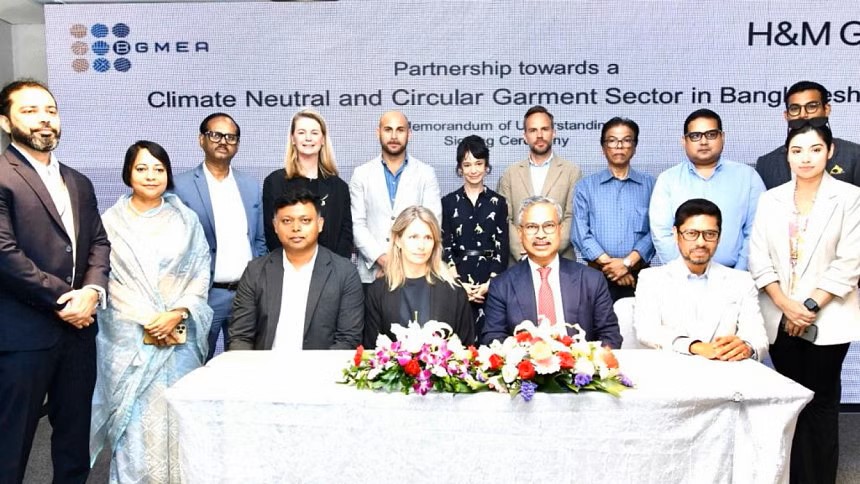Budget lacks directives for RMG sector: BGMEA president
Bangladesh Garment Manufacturers and Exporters Association (BGMEA) President Faruque Hassan said that the proposed budget for the 2023-24 FY lacks specific directives for the export-oriented textile and ready-made garment (RMG) sector.
During a post-budget reaction press conference in the capital, he said the sector proposed to reintroduce a 0.5% source tax on export, which was implemented in FY22, and fix it for the next five years.
But the proposed budget kept the 1% rate enacted by the National Board of Revenue (NBR) in FY23, he said.
The BGMEA President also requested the withdrawal of the source tax of 10% on the incentives received by the exporters from the government.
Faruque Hassan said the apparel sector is struggling to survive due to the low export earnings amid the ongoing global economic crisis.
He highlighted that the finance minister stated the need to reduce cash incentives in preparation for the lifting of such facilities after the Least Developed Country (LDC) graduation in 2026.
However, countries like the US, India, and many other developed nations continue to provide cash incentives to their industries, he added.
“We developed our export sector due to the cash incentives and this should not be reduced. I believe that the government also knows how the facility will be continued after the LDC graduation. We are also seeking a 10% cash incentive for exporting non-cotton clothes as we have a huge opportunity in the sector,” he said.
Furthermore, the president of BGMEA thanked the prime minister for several proposals including the reduction of the total tax incidence to 15% on container imports, the waiver of VAT on waste fabrics, the introduction of new HS codes to facilitate technological advancement, and the establishment of a new customs office at the export processing zone to streamline the export and import processes.
‘Budget encourages IT-based, environment-friendly industries’
Meanwhile, Syed Nazrul Islam, first vice president of BGMEA, stated that the proposed budget aims to promote the establishment of export-oriented information technology-based and environmentally friendly industries, with a focus on the development of the export-oriented industrial sector.
He also highlighted the significance placed on renewable energy within the budget.
In a press release issued on Friday, he said that the proposed budget includes measures such as the rationalisation of the tariff structure and the withdrawal of cash assistance in the export sector, in line with the criteria established by the World Trade Organisation for countries transitioning from the Least Developed Country status by 2026.
The press release highlighted that the budget failed to address the substantial demands put forth by the export-oriented garment industry.



































